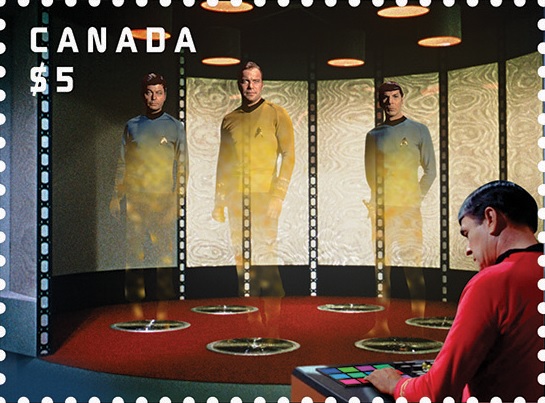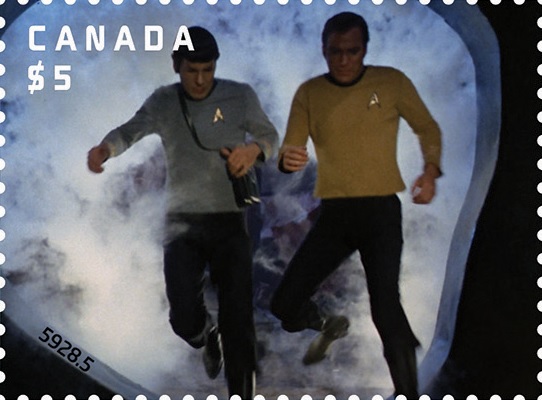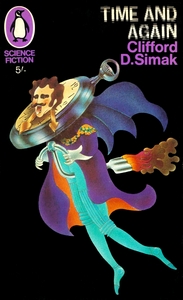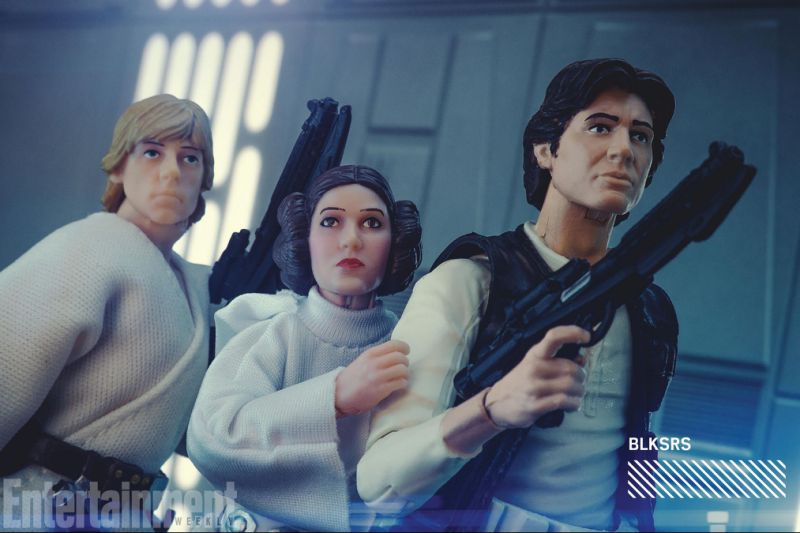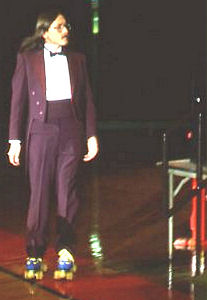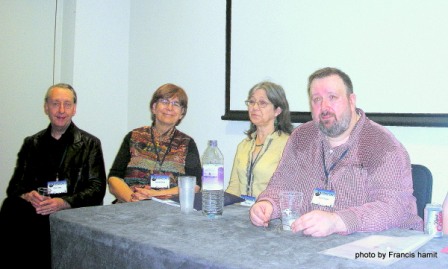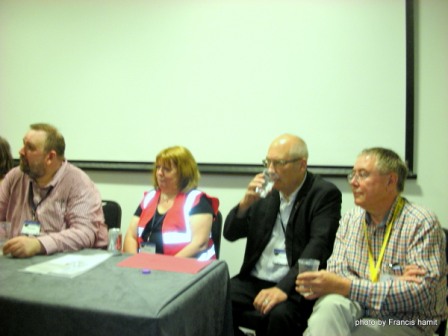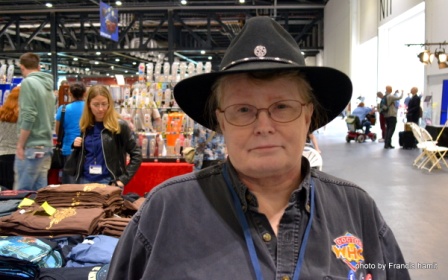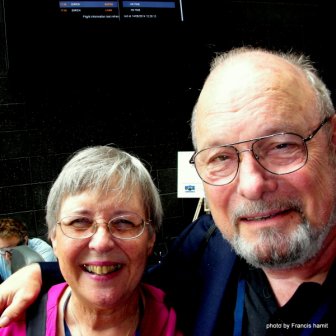(1) DISNEY’S CHRISTOPHER ROBIN. Disney has dropped the Christopher Robin official teaser trailer.
The Hundred Acre Wood is opening up to our world. Watch the brand-new teaser trailer for Disney’s Christopher Robin. Coming soon to theatres Disney’s “Christopher Robin” is directed by Marc Forster from a screenplay by Alex Ross Perry and Allison Schroeder and a story by Perry based on characters created by A.A. Milne. The producers are Brigham Taylor and Kristin Burr with Renée Wolfe and Jeremy Johns serving as executive producers. The film stars Ewan McGregor as Christopher Robin; Hayley Atwell as his wife Evelyn; Bronte Carmichael as his daughter Madeline; and Mark Gatiss as Keith Winslow, Robin’s boss. The film also features the voices of: Jim Cummings as Winnie the Pooh; Chris O’Dowd as Tigger; Brad Garrett as Eeyore; Toby Jones as Owl; Nick Mohammed as Piglet; Peter Capaldi as Rabbit; and Sophie Okonedo as Kanga.
(2) CTHULHU. But if Pooh is too sweet for your taste, Reddit’s “Ask Historians” takes a deep dive into question: “Where did HP Lovecraft come up with the idea of Cthulhu?”
…So the idea of Cthulhu was percolating in Lovecraft for some time; he borrowed portions of concepts from other writers – artificial mythology, sleeping gods and mountainous size from Dunsany; the alien origin and creepy cults from Theosophy (this is actually made more explicit in the text); the telepathic dream-sendings from Dunsany and de Mausauppant – the octopus/dragon mixture is a little hard to pin down, since Lovecraft never went into specifics about his influences on that in his letters, although he did provide a sketch of the idol. But tentacles were not unfamiliar in weird fiction in the period….
(3) PRO TIPS. Much to be learned from “8 Writing Tips from Jeff VanderMeer” at the Chicago Review of Books.
1—The amount of time you spend writing isn’t necessarily as important as the time spent thinking about what you are going to write.
I often feel it is easier to spoil a novel by beginning to write too soon than by beginning to write too late. Perhaps this is because I need to know certain things before I can even contemplate writing a novel.
For example, I need to know the main characters very well, the initial situation, and the ending (even if the ending changes by the time I write it). I also have to have some kind of ecstatic vision about a scene or character, some moment that transcends, and I have to have what I call charged images associated with the characters. These aren’t images that are symbolic in the Freudian sense (humbly, I submit that Freud just gets you to the same banal place, as a novelist, every time), but they are definitely more than just images. They have a kind of life to them, and exploring their meaning creates theme and subtext. For example, the biologist encountering the starfish in Annihilation or Rachel in Borne reaching out to pluck Borne from the fur of the giant bear. (Both of which also have their origin in transformed autobiographical moments, and thus an added layer of resonance.)
Once I know these things, it may still be six months to a year before I begin to write a novel. The process at that point is to just record every inspiration I have and relax into inhabiting the world of the novel. To not have a day go by when I’m not thinking about the characters, the world they inhabit, and the situations. If I lose the thread of a novel, it’s not because I take a week off from writing, but because I take a week off from living with the characters, in my head. But, hopefully, the novel takes on such a life that everything in the world around me becomes fodder for it, even transformed….
(4) FINDING THE GOOD STUFF. At Rocket Stack Rank: “New Features: Flag, Rate, Group, Highlight Stories”. Greg Hullender explains:
Our main goal is to be as useful as possible to readers looking for good stories and for fans trying to make nominations for awards, and a key part of that has always been the big tables of recommended stories. Almost from the beginning, people have asked us to give them more ways to navigate those tables, and we’ve finally put something together.
Fans wanting to use RSR to manage his/her Hugo longlist and short list can do that now by giving 5-stars to the shortlist and 4-stars to the longlist-only stories. These ratings are saved on your local device and can be backed up, copied, shared, etc.
Readers who only read stories that are free online can highlight all such stories—including the ones that appeared in print magazines but are also available online.
Readers who care about the recommendations of particular reviewers can highlight those.
Etc.
The feature is new, and doubtless has some bugs in it. We’d welcome any and all feedback.
(5) DEVELOPING STORY. Jason Sanford, in a free post on his Patreon, published a “Response from Left Hand Publishers” to some issues he raised about their business practices.
This morning I received a response from Left Hand Publishers to my analysis of concerns related to their publishing house. The response is presented below in its entirety, along with additional information provided by the publisher in regards to issues I raised about their contract…
(6) PUSHBACK ACKNOWLEDGED. In “Washington National Cathedral’s hawk is named Millennium Falcon. How stupid are we?”, the Washington Post’s John Kelly investigates the red-tailed hawk Miillennium Falcon currently living at Washington National Cathedral. He consults an expert at the Audubon Naturalist Society who says that both hawks and falcons are both part of the order Falconiformes and then comes up with other exciting names for the bird, including Hawk Solo and Jabba the Hawk.
That’s the name a majority of the voters picked: Millennium Falcon, even though the bird is not a falcon but a hawk. Hawks have feathered “fingers” at the ends of their wings, instead of the tapered points that falcon wings come to. Falcons such as the peregrine are rarer in our area.
This is what happens when you let the public vote. Sometimes, we can’t be trusted. Look at that research vessel in Britain, which, if the public had had its way, would have been christened Boaty McBoatface. (It became RRS Sir David Attenborough, with an underwater vehicle it carries bearing the BMcB moniker.)
I figured that ornithologists and other bird-lovers would surely share my sense of outrage. I mean, a hawk isn’t a falcon. With our skyscrapers, chemicals and habitat destruction, humans are killing millions of birds a year. Shouldn’t we at least be able to properly differentiate among the victims?
But Alison Pierce at the Audubon Naturalist Society in Chevy Chase, Md., was more forgiving. “Hawk Solo would have been a more taxonomically-correct choice,” she wrote in an email. “But since hawks and falcons are both part of the order Falconiformes, we’re willing to give them a pass on Millennium Falcon. As the D.C. region’s consummate birdwatchers and lovers, we think it’s cool that so many area residents appreciate the beauty of the red-tailed hawk, which is one of our most common raptors.”
(7) NICHOLLS OBIT. Encyclopedia of SF creator Peter Nicholls died March 6, of cancer reports SF Site News. He won a Hugo Award in 1980 for its first edition, and shared Hugos won by its subsequent editions in 1994 and 2012. Nicholls also won SFRA’s Pilgrim Award (1980), and the Peter McNamara Award (2006), among other honors.
His SFE colleague John Clute said in “Peter Nicholls (1939-2018)”:
We announce with great regret the death on 6 March of Peter Nicholls (1939-2018), who conceived and edited the first edition of The Encyclopedia of Science Fiction (1979), who co-edited the second edition in 1993, and who served as Editor Emeritus of this third edition (2011-current) until today. His withdrawal from active editing was due solely to a diagnosis of Parkinson’s Disease in 2000, after which he rarely left his native Australia; but he continued to speak to the rest of us, sometimes firmly, always with the deepest loyalty to the encyclopedia he had given birth to and nurtured.
(8) BAYLIS OBIT. Trevor Baylis, the inventor of the wind-up radio, has died.
Trevor Baylis believed that the key to success was to think unconventional thoughts.
It was this mindset that saw him develop his clockwork radio after hearing about the problems of educating African people about HIV and Aids.
It enabled those in remote areas without electricity, or access to batteries, to get the information that could save their lives.
But despite the success of this, and other inventions, Baylis never made a great deal of money from his many ideas.
(9) COMICS SECTION.
- Mike Kennedy saw Brewster Rockit get a good laugh out of a well-known sf trope.
(10) AN OLD FAMILIAR FACE. The Hollywood Reporter says some major movies are the focus of litigation over technology infringement: “New Copyright Theory Tested in Lawsuit Over Disney’s ‘Avengers,’ ‘Guardians of the Galaxy'”.
A VFX firm asserts its software program is an original literary work and that Hollywood studios are liable for vicarious and contributory infringement.
Rearden LLC, the VFX firm that claims ownership to a popular facial motion-capture technology used in Hollywood, is not giving up on hopes of winning a copyright lawsuit against Disney, Paramount and Fox. On Tuesday, the plaintiff brought an amended lawsuit that tests a new copyright theory over blockbuster films including Guardians of the Galaxy, Avengers: Age of Ultron and Beauty and the Beast. Ultimately, the plaintiff remains insistent that these films deserve to be literally impounded and destroyed.
The background of the case is complicated, but what’s essential to know is that in a previous lawsuit, Rearden was able to convince a judge that its technology was stolen by Digital Domain 3.0 and a Chinese company. After the victory, Rearden went after the customers of the technology — the Hollywood studios using facial motion-capture software to do things like de-age Arnold Schwarzenegger in Terminator Genisys or transform actor Dan Stevens into Beast for Beauty and the Beast.
(11) LIPTAK. Andrew Liptak has been writing up a storm at The Verge (as always) and Filers will find plenty of interest in his recent posts.
There are a ton of podcasts out there, but finding the right one can be difficult. In our new column Pod Hunters, we cover what we’ve been listening to that we can’t stop thinking about.
A couple of years ago, Verge listener David Carlson wanted to help his wife. She had a new job with a long commute, and he wanted her to read some of his favorite articles at The Verge, like All Queens Must Die and Welcome to Uberville, so he recorded audio versions for her to listen to en route. He’s since moved on to a project of his own: The Hyacinth Disaster, a science fiction story told through the black box transmissions of a doomed asteroid mining ship in our solar system.
In his debut novel, author Tom Sweterlitsch constructed a fascinating mystery with Tomorrow and Tomorrow, set in a virtual version of Pittsburgh after a terrorist attack leveled the city. In The Gone World, he introduces an even more ambitious investigation: one that jumps back and forth in time, and which could decide the fate of humanity. It’s a complicated, dazzling novel that keeps the reader hooked until the last pages.
The Gone World opens with a 20th-century NCIS agent named Shannon Moss on a training mission in the distant future of 2199. She’s part of the Naval Space Command, which runs a covert space and time-traveling program that sends Navy personnel across the galaxy and across time. On her first mission, she discovers a horrifying scene: a version of herself crucified mid-air in a broken wasteland. She’s witnessed what her agency calls The Terminus, a mysterious phenomenon which signals an apocalypse that appears to be moving closer and closer to the present. After her training, she’s called to investigate a brutal murder in her present — 1997. The apparent culprit appears to be a Navy SEAL named Patrick Mursult, once part of the same time-travel program as Moss — until his starship, the Libra, was lost on a mission.
Star Trek: Discovery is the biggest change to the Star Trek franchise in years, adopting the same attitudes that the showrunners for Stargate and Battlestar used: putting an emphasis on agonizing decisions that challenge the characters in complicated ways. At New York Comic Con, Discovery executive producer Akiva Goldsman explained that the new version was putting an emphasis on its characters. “If Jim Kirk had to deal with Edith Keeler’s death in ‘City on the Edge of Forever’ as if it were real life, it would take a whole series or a season,” Goldsman said.
In the months since, I’ve found that the Kindle opens up more dedicated reading time. While before I’d only use the Kindle app on my phone to read snippets while I was bored (and usually without cellular service), I’m now using it to actually take time and sit and read. I can’t flip over to check e-mail or lose myself in Twitter. I can capture that 15 to 30 minutes at night or in the morning to read without turning on a light.
The results are promising. I strive to read about a book a week, and I’ve been setting aside time in the morning to sit down and read, before I plug into the world for the rest of the day. I haven’t abandoned my paper books — I’ve got more of them in my house than ever — but what the Kindle does is give me options.
(12) NEW WRINKLE. In the Washington Post, Sandie Angulo Chen interviews Storm Reid, who is happy to star in A Wrinkle in Time and proud to be “a kid of color” — “Storm Reid felt an instant bond with ‘Wrinkle in Time’ character”.
The ninth-grader first read Madeleine L’Engle’s 1962 science-fiction classic when she was in the sixth grade. Storm says she felt an immediate connection with Meg, a brilliant but misunderstood middle-schooler who goes on an adventure across time and space.
“She’s such a peculiar character, and I wanted to know more about her. And I thought it was so amazing that she couldn’t realize how beautiful and smart and gracious she was, but everyone around her saw it,” the 14-year-old actress told KidsPost. “It took her a trip around the universe to notice that.”
Like Meg, Storm loves and excels in science and math. But she doesn’t think readers or viewers have to like those subjects to understand the character.
“I relate to Meg so much, and other teenagers and kids relate to her, because we are all trying to figure things out,” Storm explained. “We all might have things in our lives that are stopping us, but Meg shows all of us that we can overcome our challenges and we can live out our dreams.”
(13) MUSICAL TRADITION COMING TO AN END. The 86-year-old composer is finishing his run: “’Star Wars’ Composer John Williams May Stop After ‘Episode IX’: ‘That Will Be Quite Enough for Me’”.
There’s at least one member of the “Star Wars” galaxy who might not be saddling up for any further adventures after J.J. Abrams’ “Episode IX” wraps the Skywalker saga in 2019. NME reports (from a chat on California radio station KUSC) that longtime composer John Williams might be leaving the franchise after Abrams’ film arrives in 2019.
(14) NON-CENSUS. An opponent to the census claims to be elsetime to avoid being recorded: “New Zealand census campaigner takes to his TARDIS”.
An anti-census campaigner in New Zealand is hoping to avoid today’s compulsory national count by hiding in a TARDIS, it’s reported.
The self-styled Laird McGillicuddy, otherwise known as Graeme Cairns, says he is using the Doctor Who time-travelling space craft to boycott the five-yearly census by “travelling in time”, the New Zealand Herald reports.
Mr Cairns, who was once the leader of the satirical McGillicuddy Serious Party, has a history of unusual stunts to protest the census, which is compulsory for all New Zealanders.
He’s once claimed not to be in New Zealand by hovering above the city of Hamilton in a hot-air balloon, and on another occasion declared himself “temporarily dead”.
(15) WORDS TO LIVE BY. Jane Yolen features in The Big Idea at Whatever.
My two mottos are BIC and YIC:
Butt in chair. (Or for the finer minds—backside, behind, bottom).
Yes I Can. The answer I give if someone asks if I have time or inclination to write something for their blog, journal, magazine, anthology, publishing house. I can always say no after careful consideration. But an immediate no shuts the door for good.
Both BIC and YIC are variants of my late husband’s motto: Carpe Diem. Seize the day.
However, the word I hate most when a reviewer or introducer are talking about me is prolific. It carries on its old farmer’s back a whiff of a sniff. As if someone is looking own his or her rarified patrician nose and saying, “Well, of course she writes a lot. . .” That’s their dog whistle for inconsequential, not literary kind of stuff, things like kiddy books and verse, scifi and fantasy. Or as my father said when I was years past my fiftieth plus book, “When are you going to grow up and write something real?”
(16) BREAK THE INTERNET. Last week there was also a trailer for the new Wreck-It Ralph movie due in November.
“Ralph Breaks the Internet: Wreck-It Ralph 2” leaves Litwak’s video arcade behind, venturing into the uncharted, expansive and thrilling world of the internet—which may or may not survive Ralph’s wrecking. Video game bad guy Ralph (voice of John C. Reilly) and fellow misfit Vanellope von Schweetz (voice of Sarah Silverman) must risk it all by traveling to the world wide web in search of a replacement part to save Vanellope’s video game, Sugar Rush. In way over their heads, Ralph and Vanellope rely on the citizens of the internet—the netizens—to help navigate their way, including a webite entrepreneur named Yesss (voice of Taraji P. Henson), who is the head algorithm and the heart and soul of trend-making site “BuzzzTube.” “Ralph Breaks the Internet: Wreck-Ralph 2” hits theaters on Nov. 21, 2018.
[Thanks to David Langford, Martin Morse Wooster, Chip Hitchcock, JJ, John King Tarpinian, Microtherion, Andrew Porter, Carl Slaughter, Greg Hullender, and Mike Kennedy for some of these stories, Title credit goes to File 770 contributing editor of the day Daniel Dern.]




